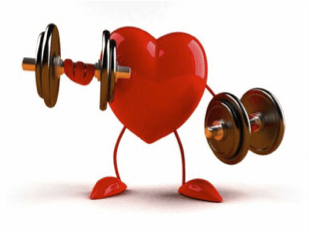It’s almost the New Year and you know what that means – time for resolutions! If you are making a resolution to start exercising this year, we have some information and tips to get you started.
 First off, you’ve heard it all before but let’s take a minute to recall the benefits of exercise! You can see decreased markers and risk factors for heart disease, lower blood pressure and cholesterol, improved weight loss/management, preservation of bone mass, decreased risk of falls, improvement of depressive and anxiety disorders, and even improve cognitive function. Regular exercise can also enhance your overall quality of life. Are you sold yet?
First off, you’ve heard it all before but let’s take a minute to recall the benefits of exercise! You can see decreased markers and risk factors for heart disease, lower blood pressure and cholesterol, improved weight loss/management, preservation of bone mass, decreased risk of falls, improvement of depressive and anxiety disorders, and even improve cognitive function. Regular exercise can also enhance your overall quality of life. Are you sold yet?
Sometimes, getting started is the hardest part. Using a pedometer or activity tracker can be a helpful way to monitor what you are doing and how you are improving. They’re not perfect and don’t give you a lot of information on the quality of movement but give you a good comparison of one day to another. Check out these links –
https://www.fitbit.com, https://jawbone.com/up, https://www.nike.com/us/en_us/c/nikeplus-fuelband
Once you’ve gotten moving, the American College of Sports Medicine (ACSM) has some general exercise guidelines (please consult your doctor or PT if you have an injury or health condition that may limit your ability to exercise):
- At least 30 minutes of moderate intensity cardio exercise at least 5 days a week for a total of at least 150 minutes of exercise/week. You can substitute 20 minutes of vigorous exercise 3 days a week or 75 minutes/week if you want!
- The talk test – if you can have a short conversation while exercising you are at the right intensity. If you can’t, slow down a little. If you could sing a song, you’re not working hard enough!
- 2-3 days/week of strengthening exercises for major muscle groups. This includes balance, agility, and coordination drills.
- 2-4 sets of each exercise per muscle group (you can see improvement with just 1 set in beginners!)
- Rest 2-3 minutes in between exercises
- At least 2 days/week of flexibility (stretching) exercises of the major muscle groups

- Try to stretch after your cardio or strength work out (or as a stand alone work out)
Here are some things to keep in mind:
- Make sure you are breathing! Sometimes when you are lifting, you feel like holding your breath helps give you that last little bit of strength – and it does increase the pressure in your abdomen (supporting your back) but it also can dangerously change your blood pressure leading to dizziness, fainting, or even a stroke! So try this – inhale during the “rest” phase of your exercise and exhale during the “work” phase of your exercise.
- Hydrate! You should be drinking water (not soda or other sugary drinks) during the day to keep your body well hydrated throughout the day. After exercise, make sure you are drinking more water to replenish any fluids that are lost. If you’ve completed very strenuous, intense, or extended exercises, you may benefit from a drink with electrolyte replacement (try chocolate milk!).
- Set a goal! Write down your goals for exercise and make sure they are realistic. If you currently don’t exercise at all, don’t set a goal to exercise every day. Start small and once you achieve those goals, set new ones! Don’t get discouraged if you have a hard time, just keep working towards what you want!
- Pick exercises/activities you like! Working out doesn’t have to happen in the gym – it can be a walk with your family or dog, working in the garden or cleaning the house. Just get out there and move!
One of the biggest risks with any exercise is musculoskeletal injury – if you start to have any pain with exercise, call us for evaluation of your symptoms before your symptoms get worse!
-Erin Bell PT, DPT
Resources:
https://www.hsph.harvard.edu/nutritionsource/tips-for-getting-exercise-into-your-life/
https://journals.lww.com/acsm-msse/Fulltext/2011/07000/Quantity_and_Quality_of_Exercise_for_Developing.26.aspx
